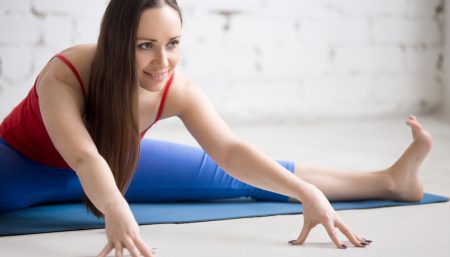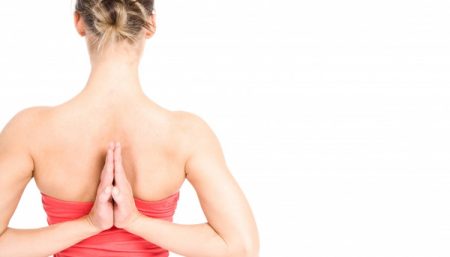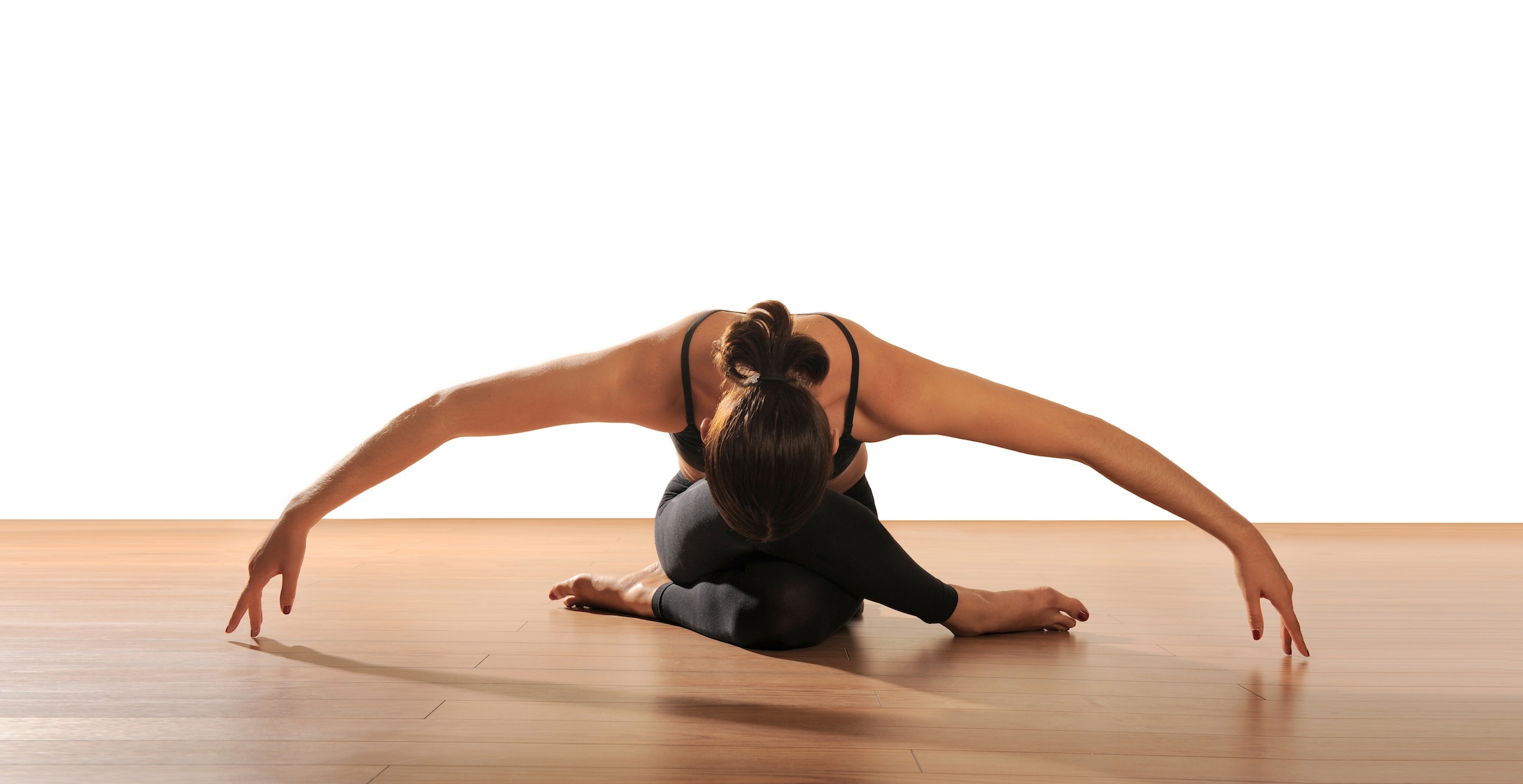
The term “yin yoga” comes from the Taoist tradition. Yang relates to movement, often repetitive movement, creating heat in the body. Yin is about finding stillness and cooling the body. At a physical level, it is an effective way to open tight hips and hamstrings. On a mental and emotional level, the practice allows the body to drop down into the parasympathetic nervous system, and therefore becomes deeply healing and nourishing. Practitioners report that it is grounding, calming and revitalizing, with profound energetic and emotional effects.
What to Expect:
- Yin yoga is practiced sitting or lying on the floor. There are no planks, no warriors, no core work. No dynamic sun salutations. No standing poses. You can expect forward bends with legs together or apart, lunges and gentle backbends – poses that are commonly practiced in dynamic yoga classes.
- The pace is slow, so you need to wear comfortable, warm clothes and maybe keep your socks on.
- In yin yoga, the poses are held for a longer period of time to increase flexibility in that part of the body. Instead of holding for five breaths, as in an ashtanga vinyasa class, in a yin class they could be held for between two and 20 minutes, although five is more usual. Longer, static holds enable us to access yin tissue – fascia (a continuous web of tissue that weaves in and around not only our muscles but also our organs, nerves and lymph.) and connective tissue. We need the combination of yang (muscle) and yin to keep the joints healthy.
Yin Yoga Asanas
Anahatasana (Melting Heart)
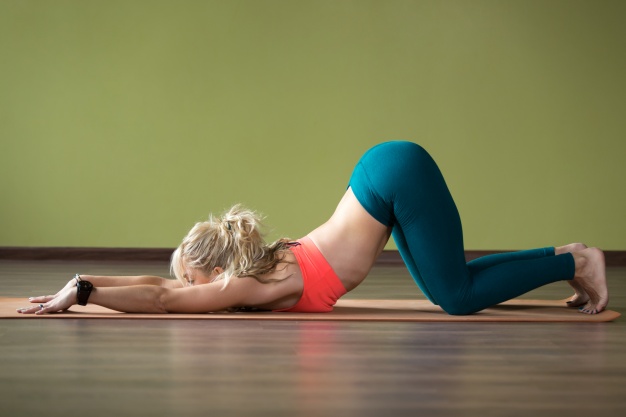
A nice backbend for the upper and middle back, will also open shoulders, softens the heart.
- On your hands and knees, walk your hands forward, allowing your chest to drop toward the floor.
- Keep your hips right above your knees.
- If possible, keep your hands shoulder width apart
Bananasana
This asana works the spine in a lateral flexion (side bend) from the iliotibial (IT) band to the tops of the side rib cage. It stretches the oblique stomach muscles and the side intercostal muscles between the ribs
- Lying on your back with your legs together and straight on the floor, reach the arms overhead and clasp your hands or elbows.
- With your buttocks firmly glued to the earth, move your feet and upper body to the right. Arch like a nice, ripe banana.
- Be careful not to twist or roll your hips off the floor. Find your first edge.When your body opens more, move both feet further to the right and pull your upper body further to the right, as well. Keep playing this edge. Don’t forget to do both sides!
Baddha Konasana (Butterfly)
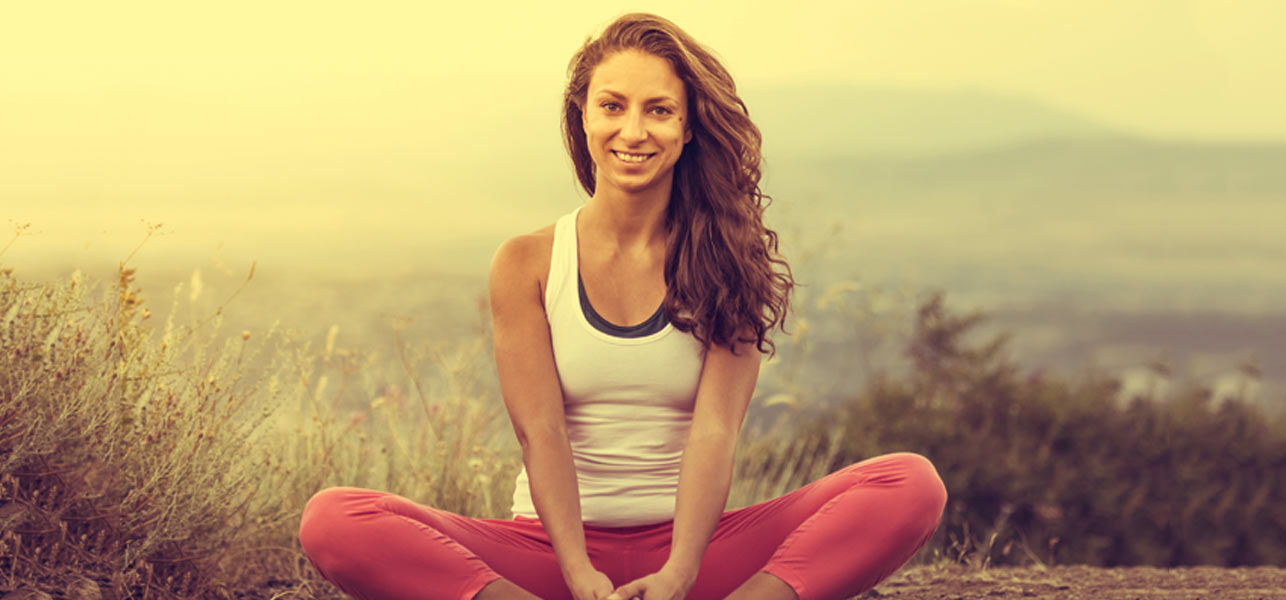
A nice way to stretch the lower back without requiring loose hamstrings
- From a seated position, bring the soles of your feet together and then slide them away from you.
- Allowing your back to round, fold forward, lightly resting your hands on your feet or on the floor in front of you.
- Your head should hang down toward your heels
Salamba Bhujangasana (Sphinx)
A modified version of Bhujangasana to help beginners ease their way into it. This pose is also good for people who have lower back ache as it has less arch and therefore reduces the pressure on the spine.
- Lie on your stomach with your legs straight behind you.
- Push up onto your forearms, an inch or so in front of the shoulder line.
- Bring your palms together in front of you.
- Stay upright without slumping your shoulders or tensing them up around your neck.
Saddle Pose
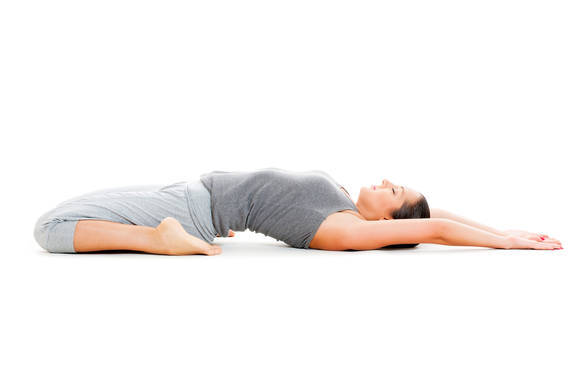
A deep opening in the sacral-lumbar arch and hips flexors and quadriceps stretch
- Sit on your feet with your knees spread comfortably apart (more than hip-width but not so far you stretch the inner groins). Lower your torso back toward the floor, supporting yourself on your elbows, your head, or if you’re quite flexible, the backs of your shoulders.
- If you feel too much strain in the lower back or if you want to focus more on stretching the feet and legs, sit between your feet instead of on them. You can increase the stretch by extending the arms overhead. Hold for at least a minute, eventually working up to 5 minutes or even more.
- To come out, lean or roll to the right and release the left leg; then lean or roll to the left and release the right leg. Saddle Pose stretches the feet, ankles, knees, thighs, sacrum, and lumbar spine. It also stimulates the digestive meridians of the legs—the stomach, spleen, and gall bladder meridians.
Note: Yin yoga is not meant to be comfortable. Much of the benefit of the practice will come from staying in this zone of discomfort, despite the mind’s urgent pleas to leave.
Ref:
Related Links
Disclaimer
The Content is not intended to be a substitute for professional medical advice, diagnosis, or treatment. Always seek the advice of your physician or other qualified health provider with any questions you may have regarding a medical condition.
